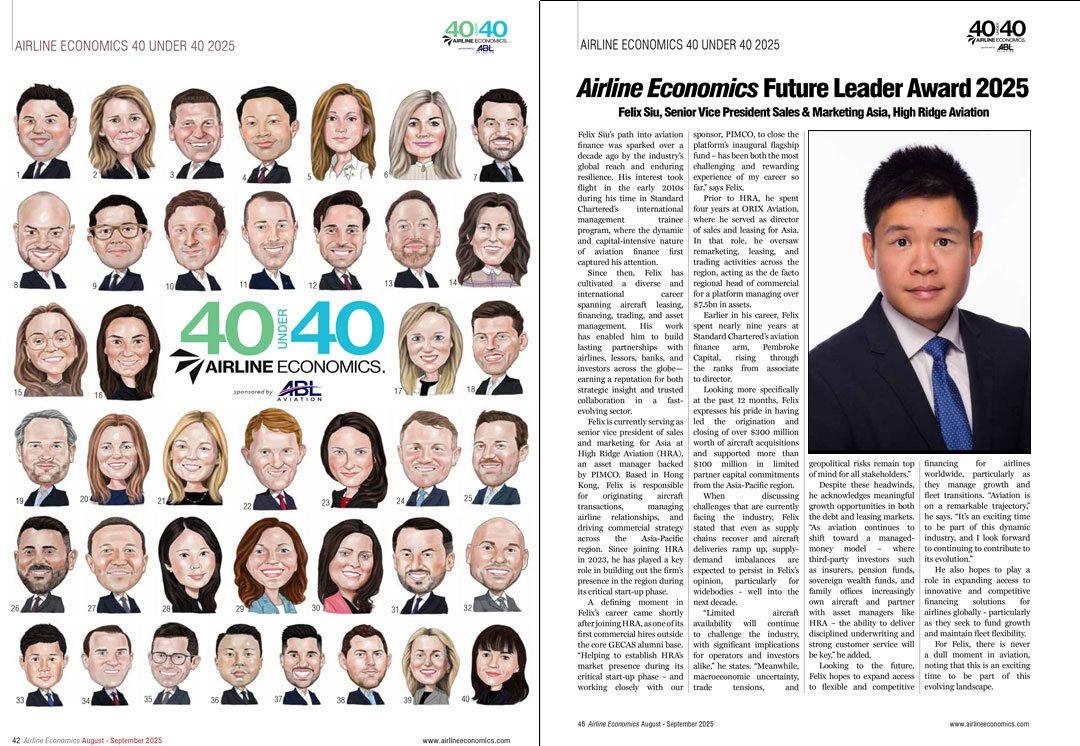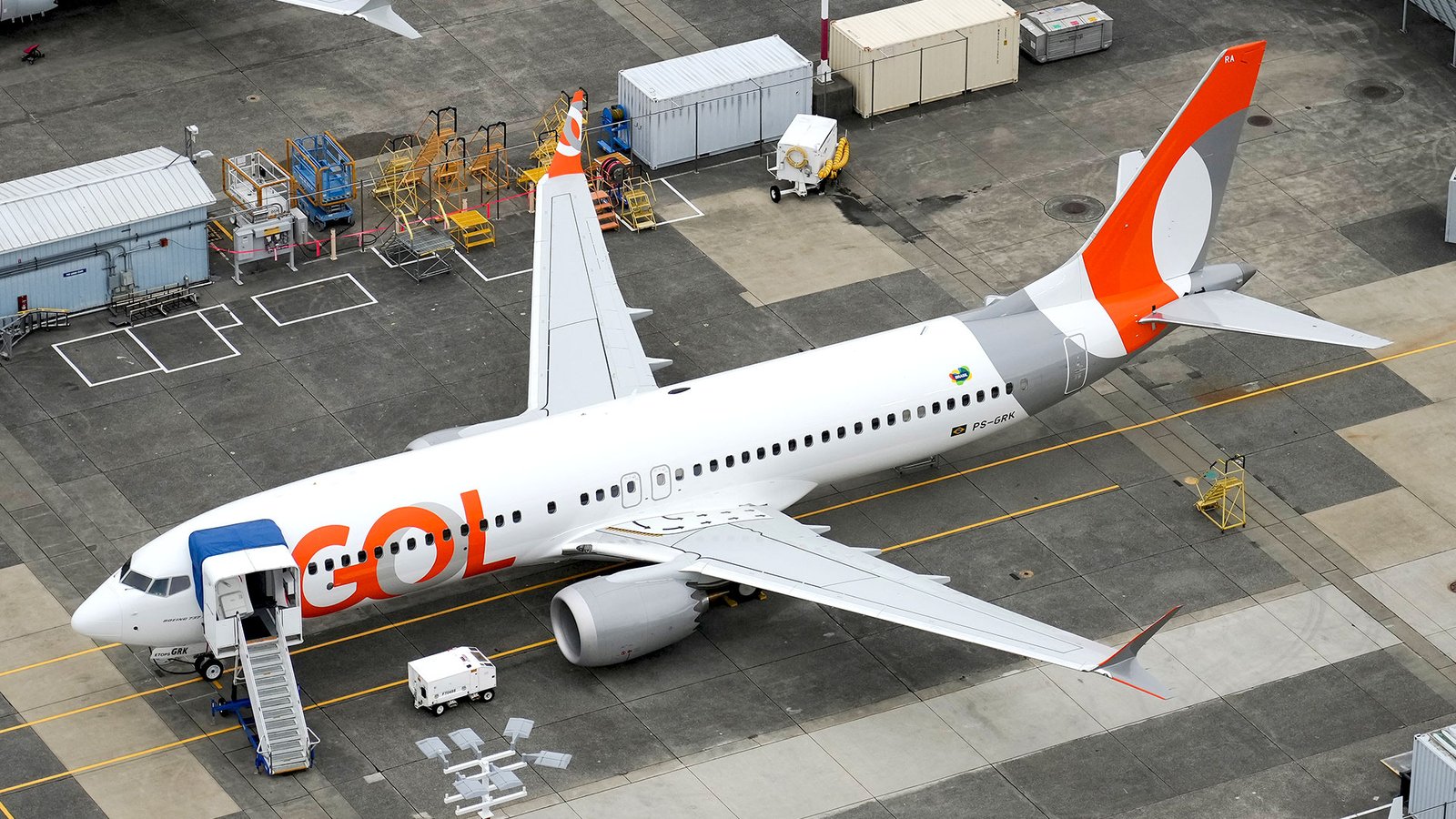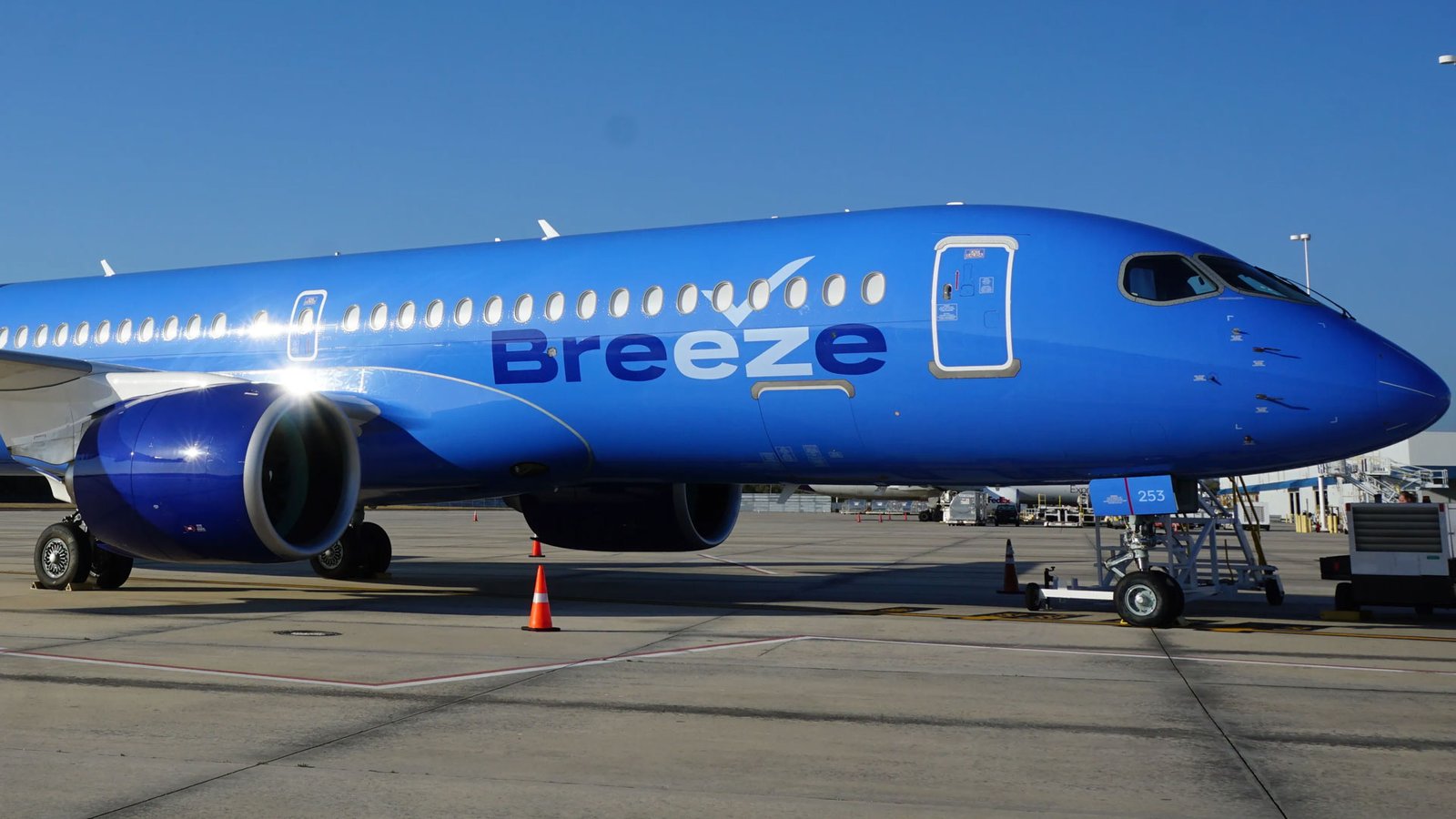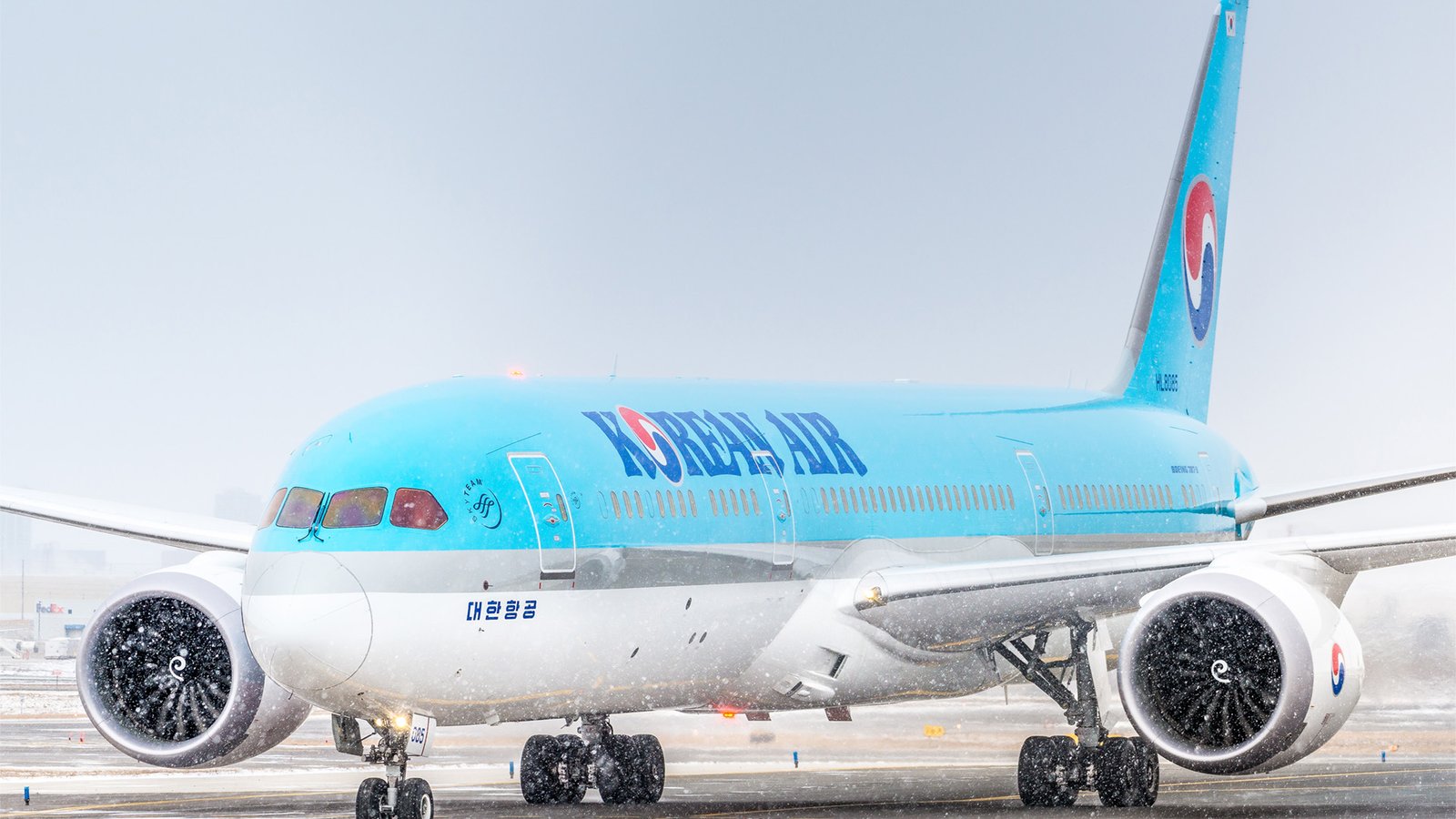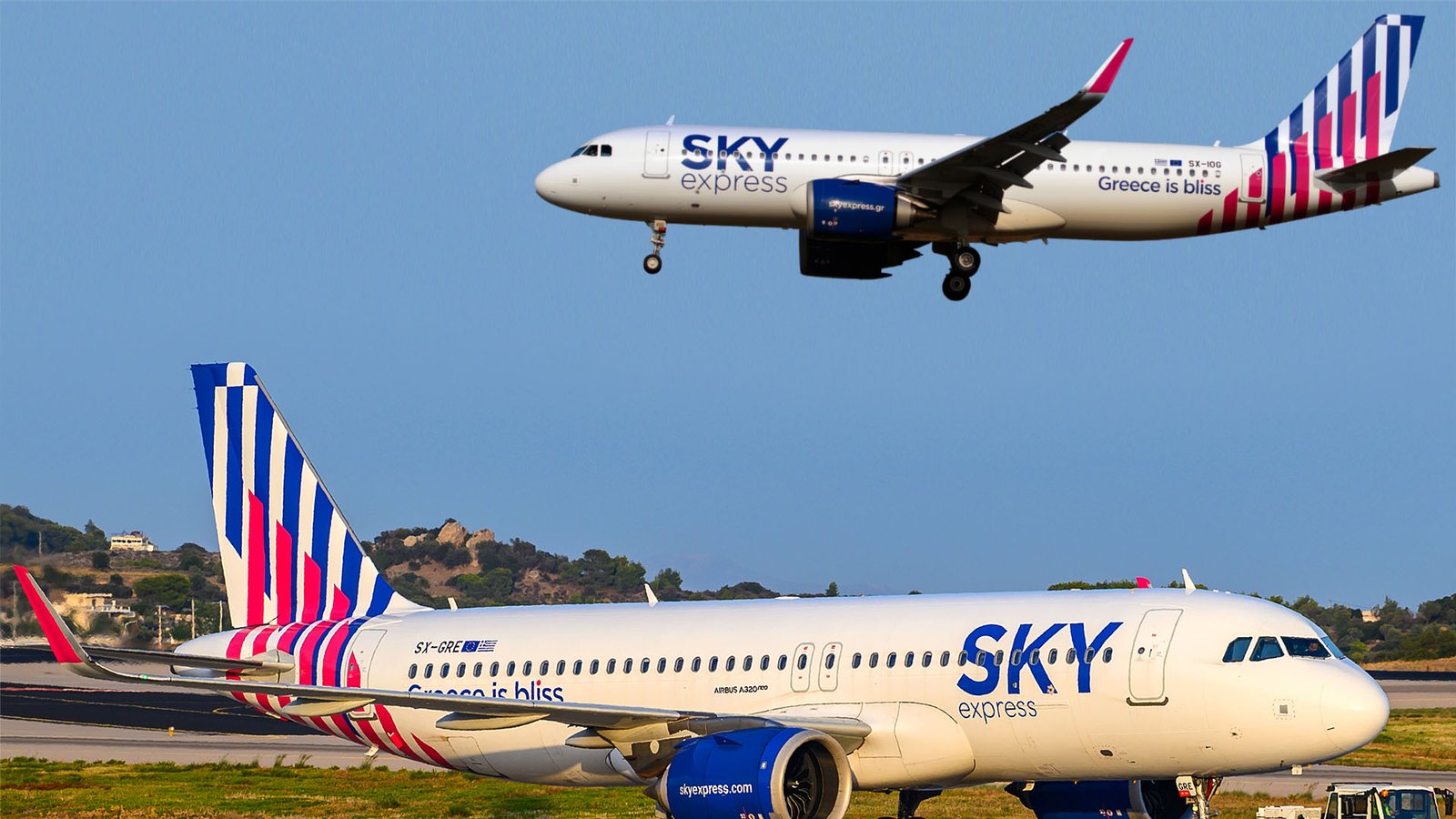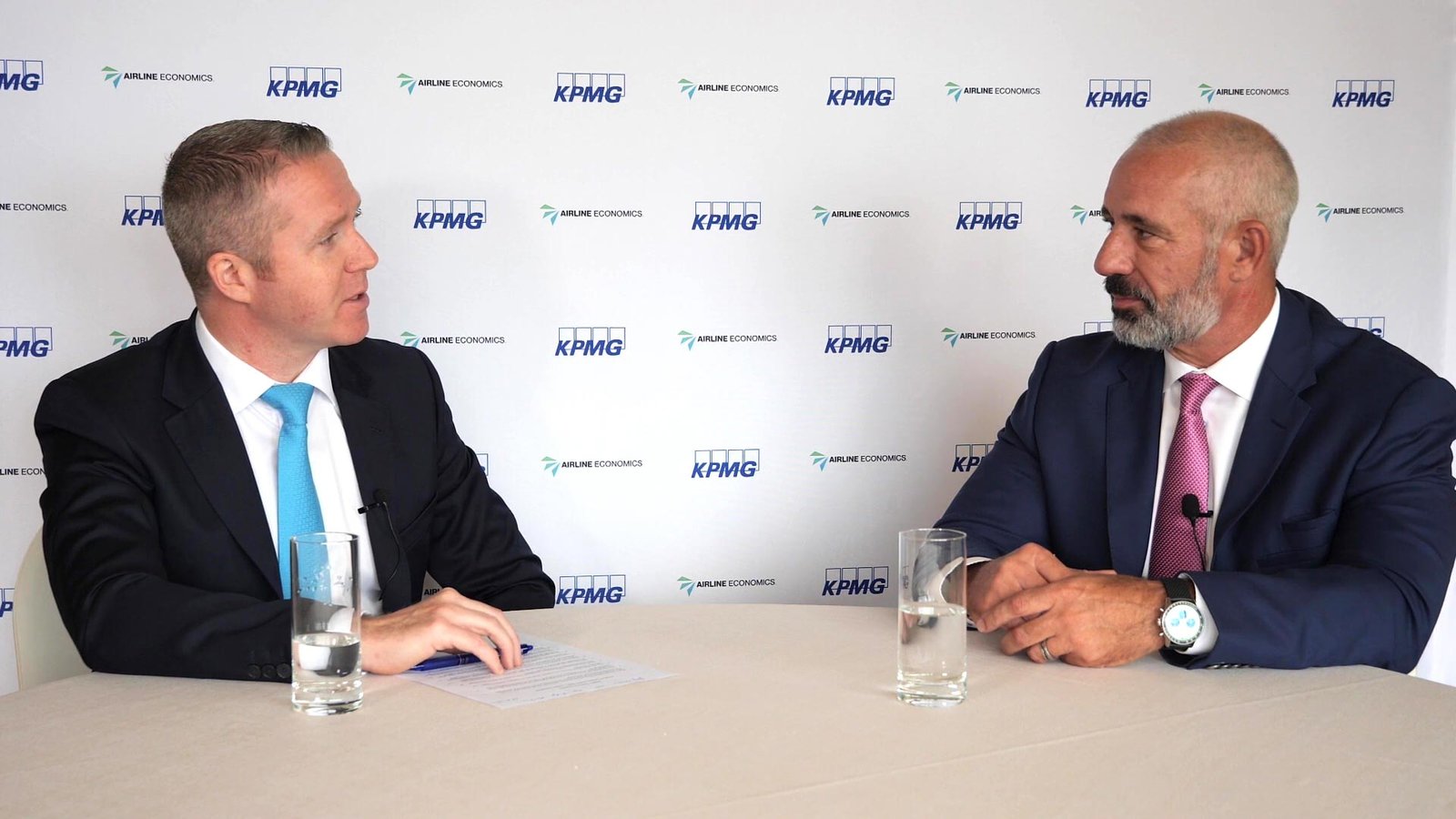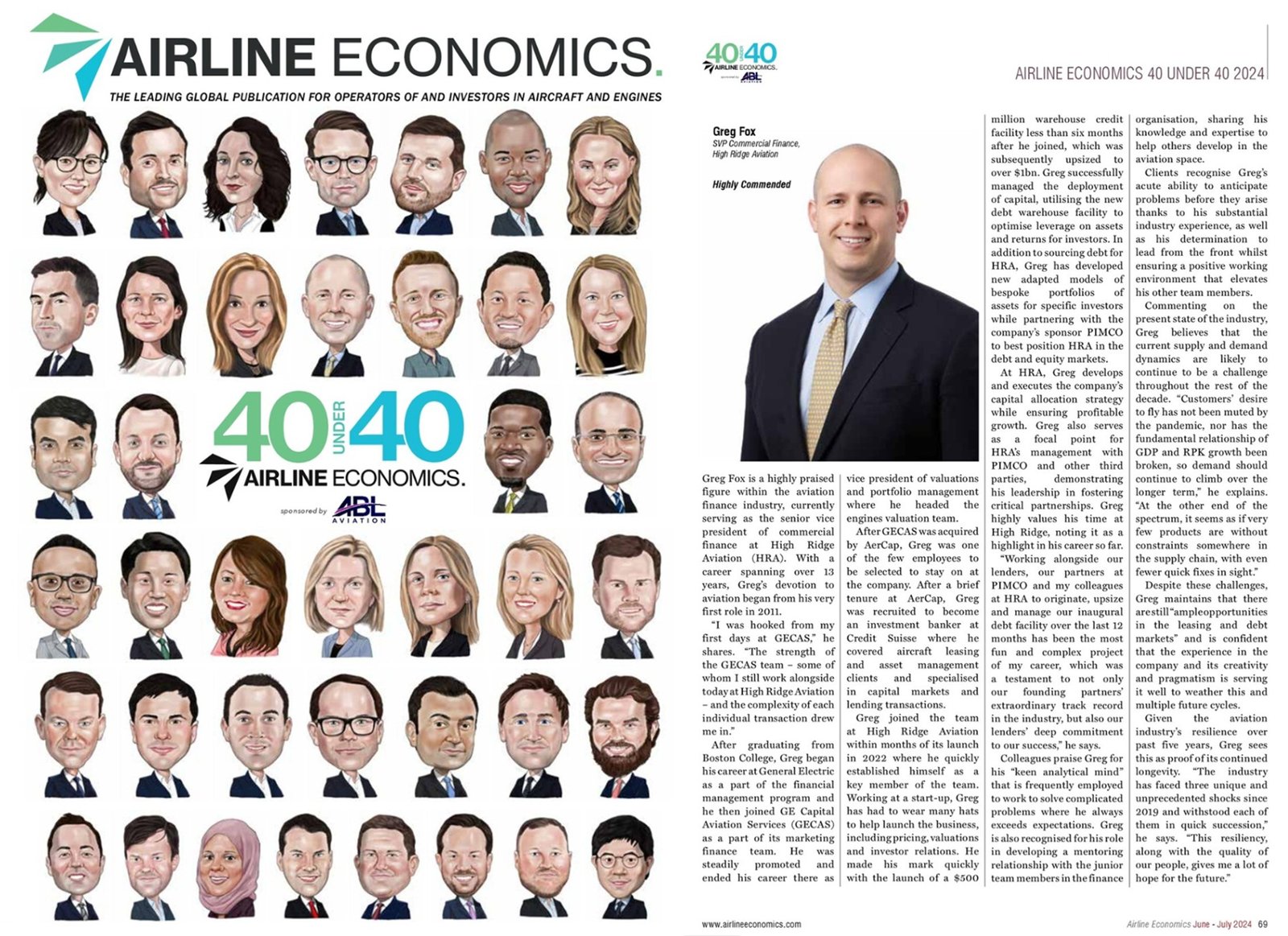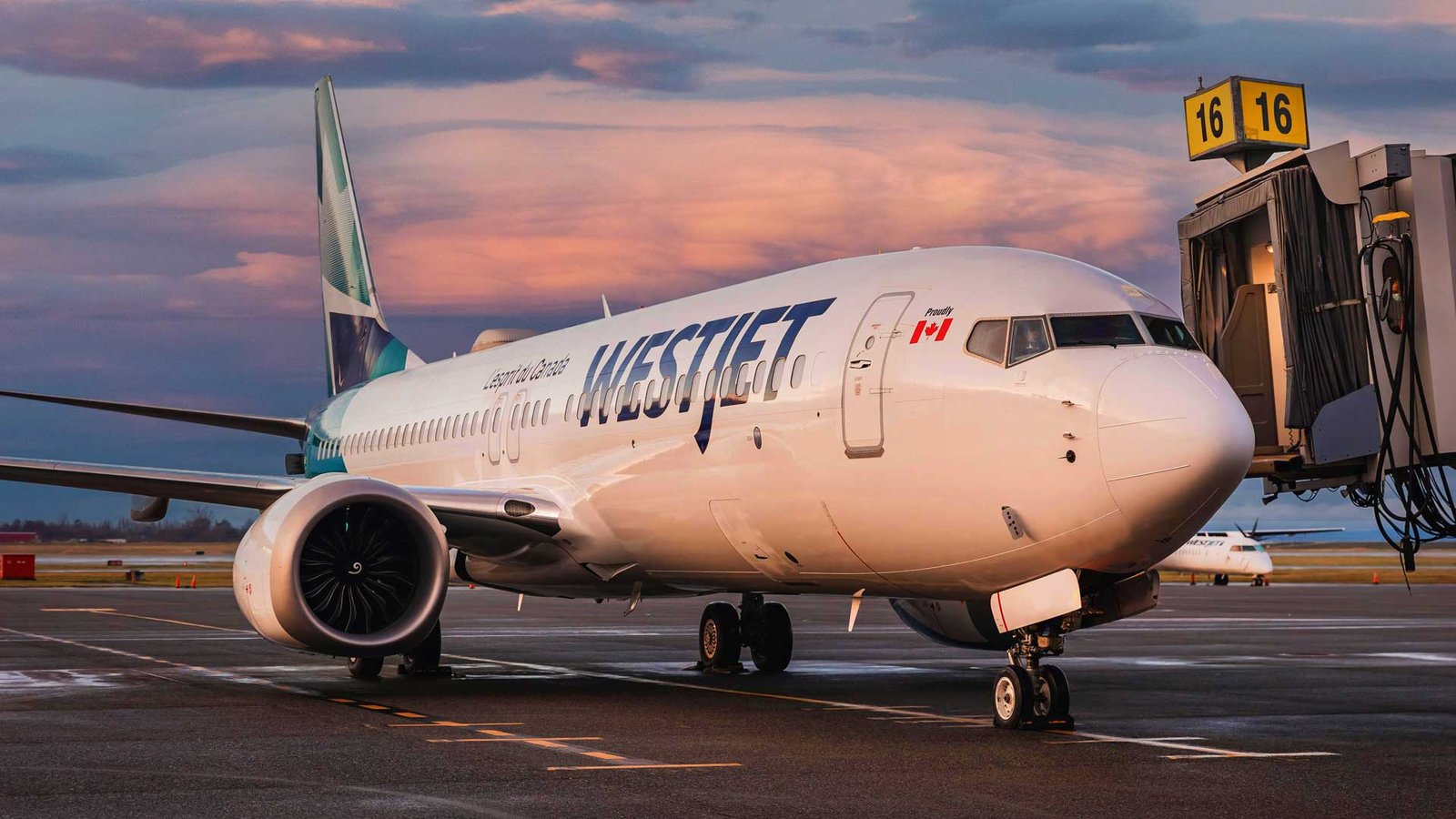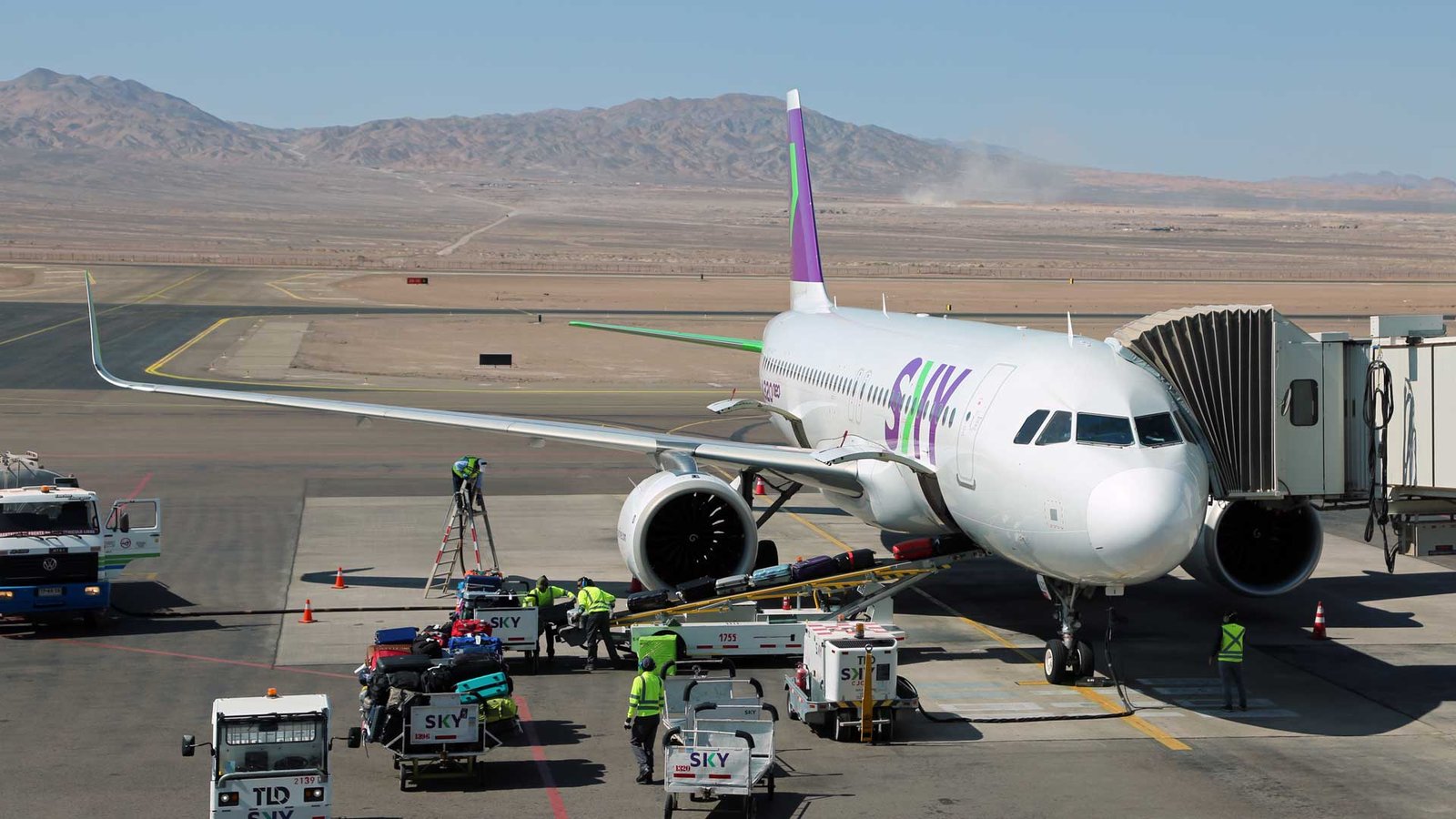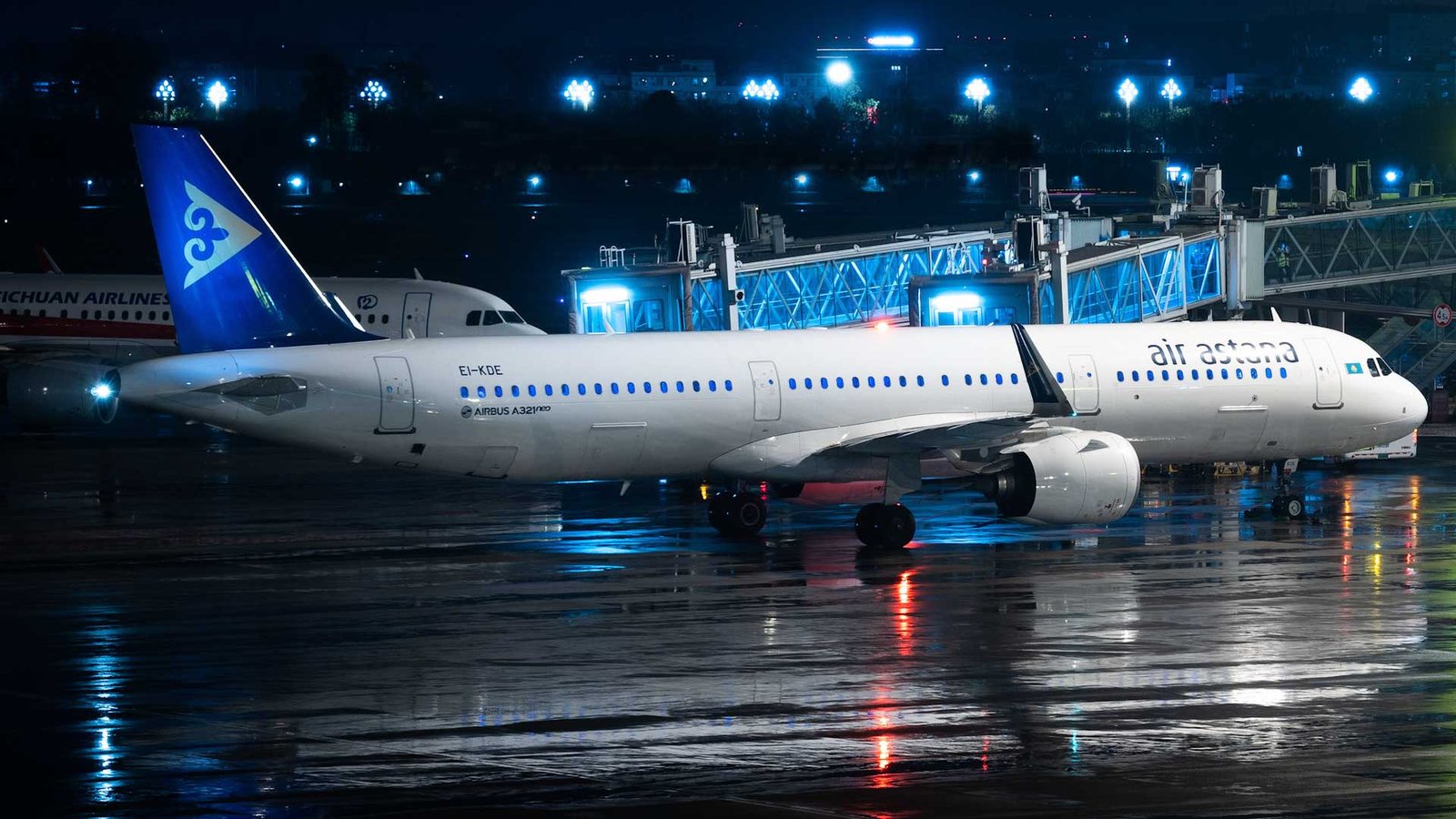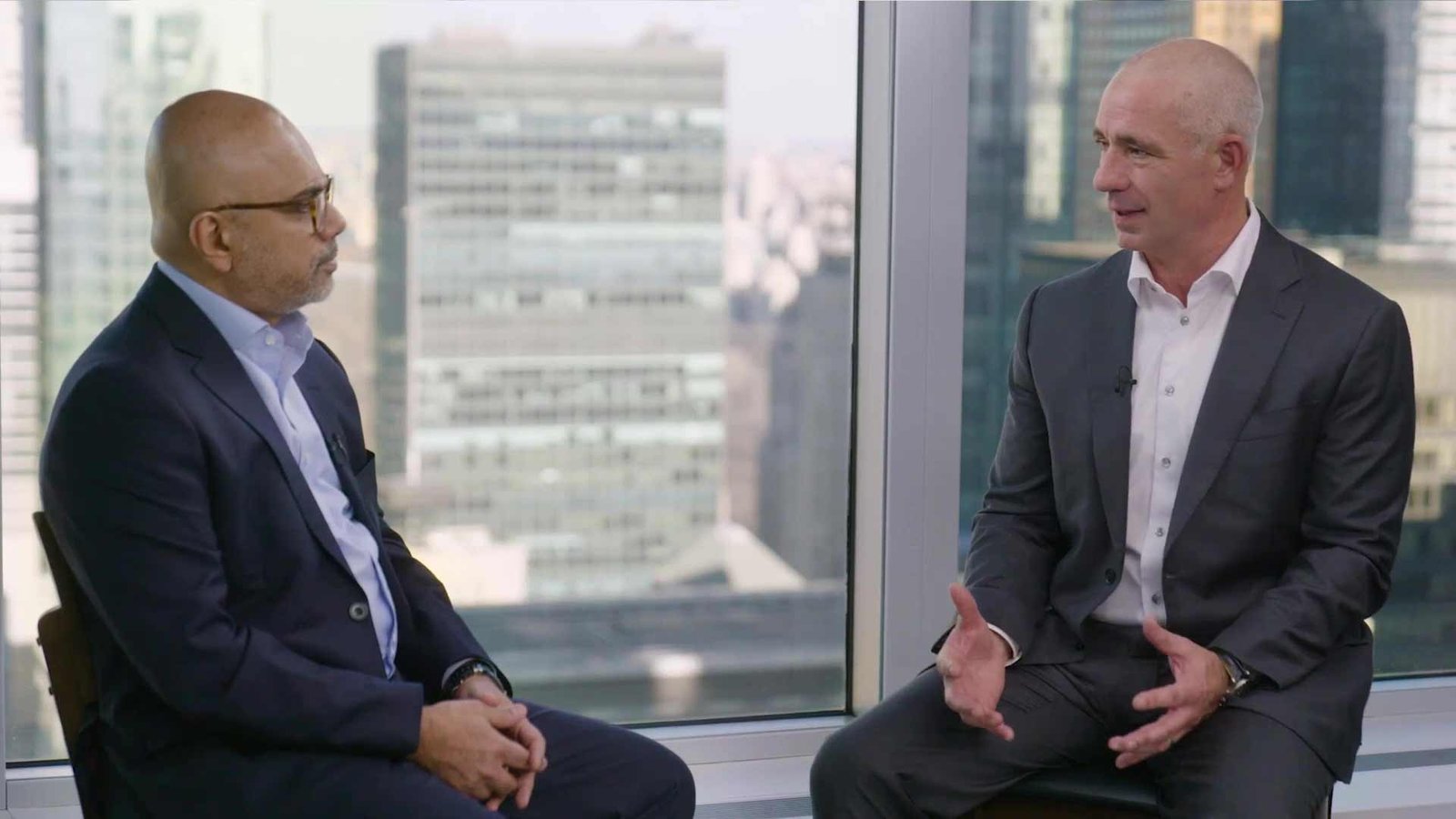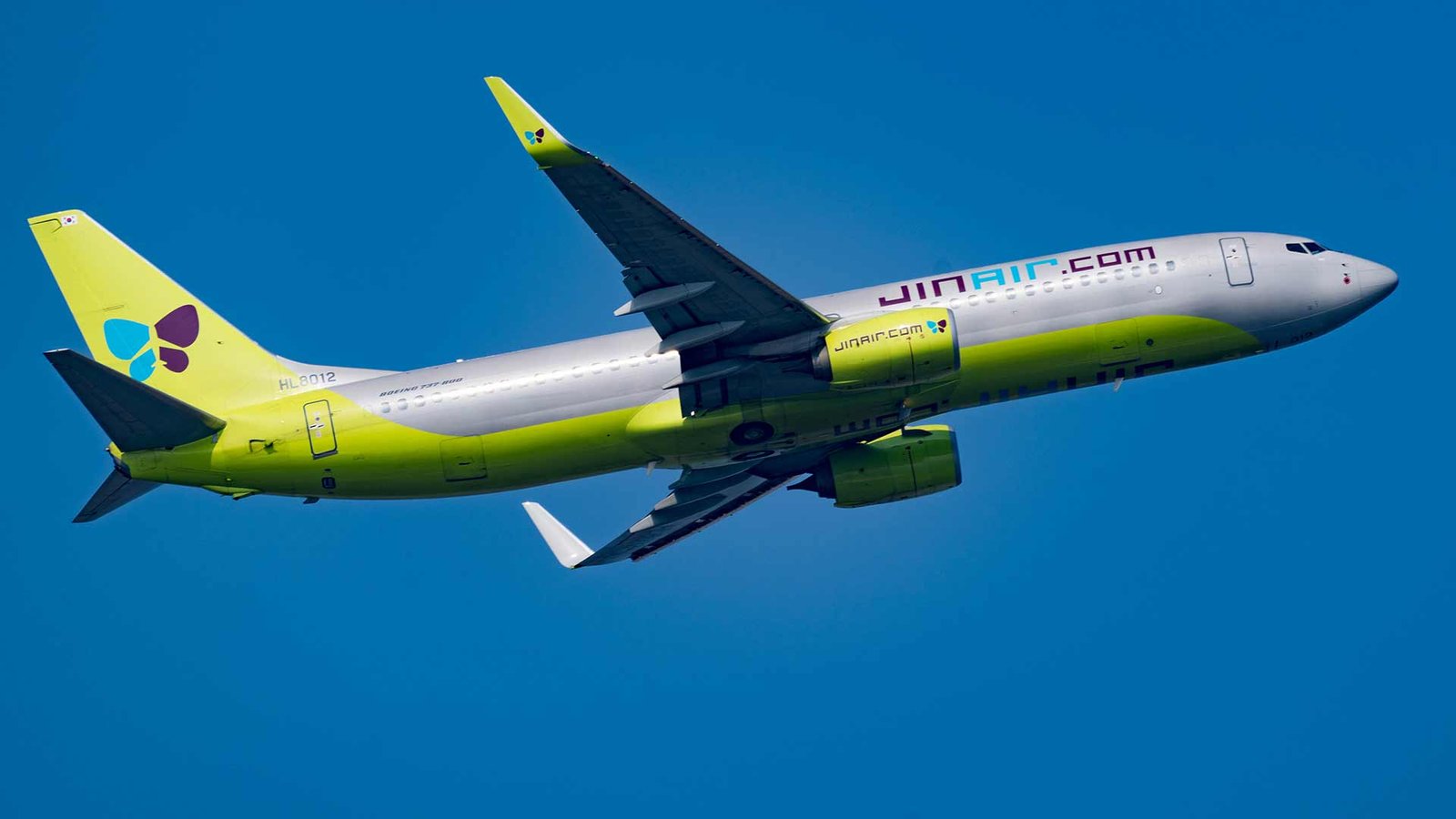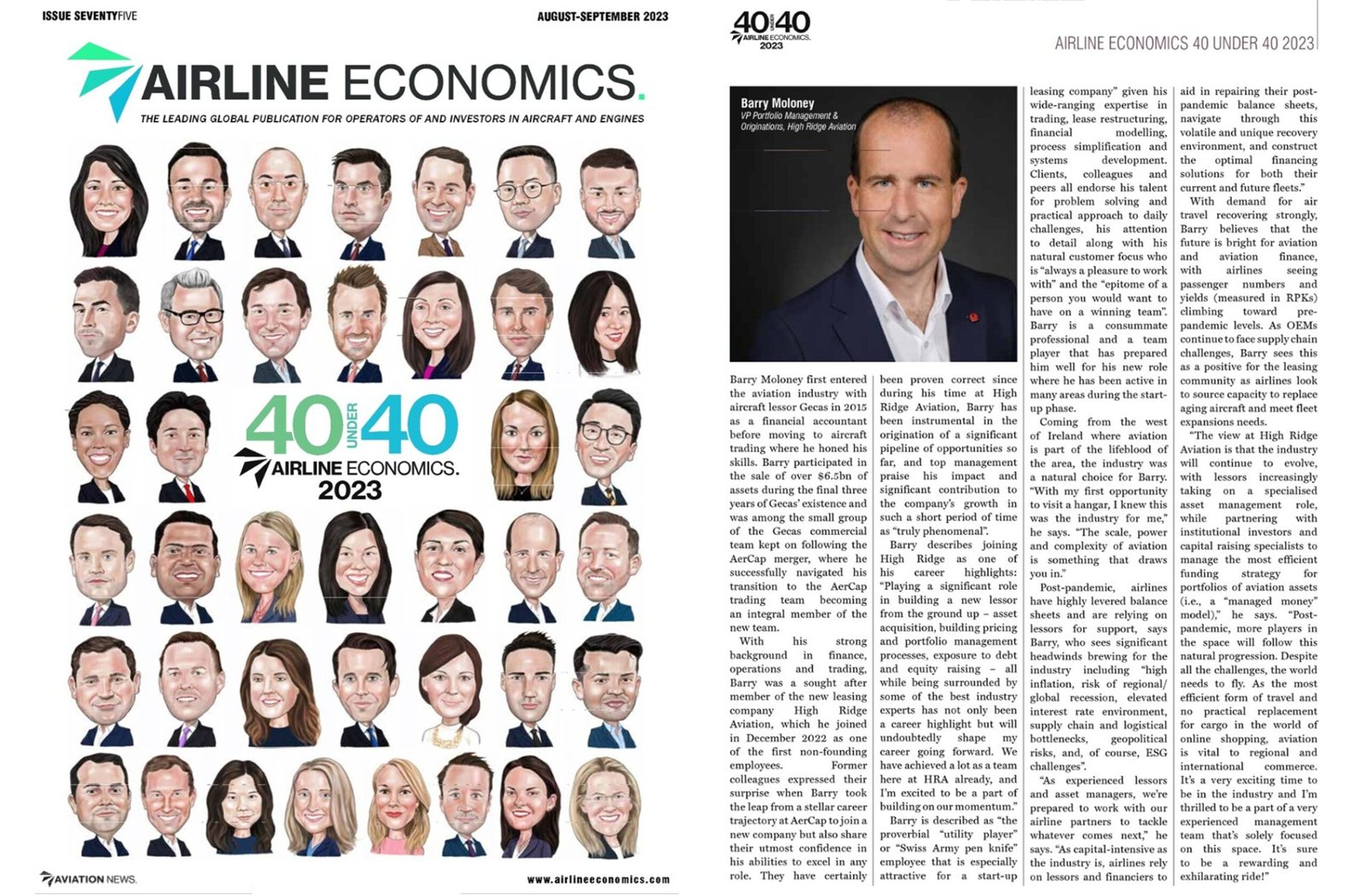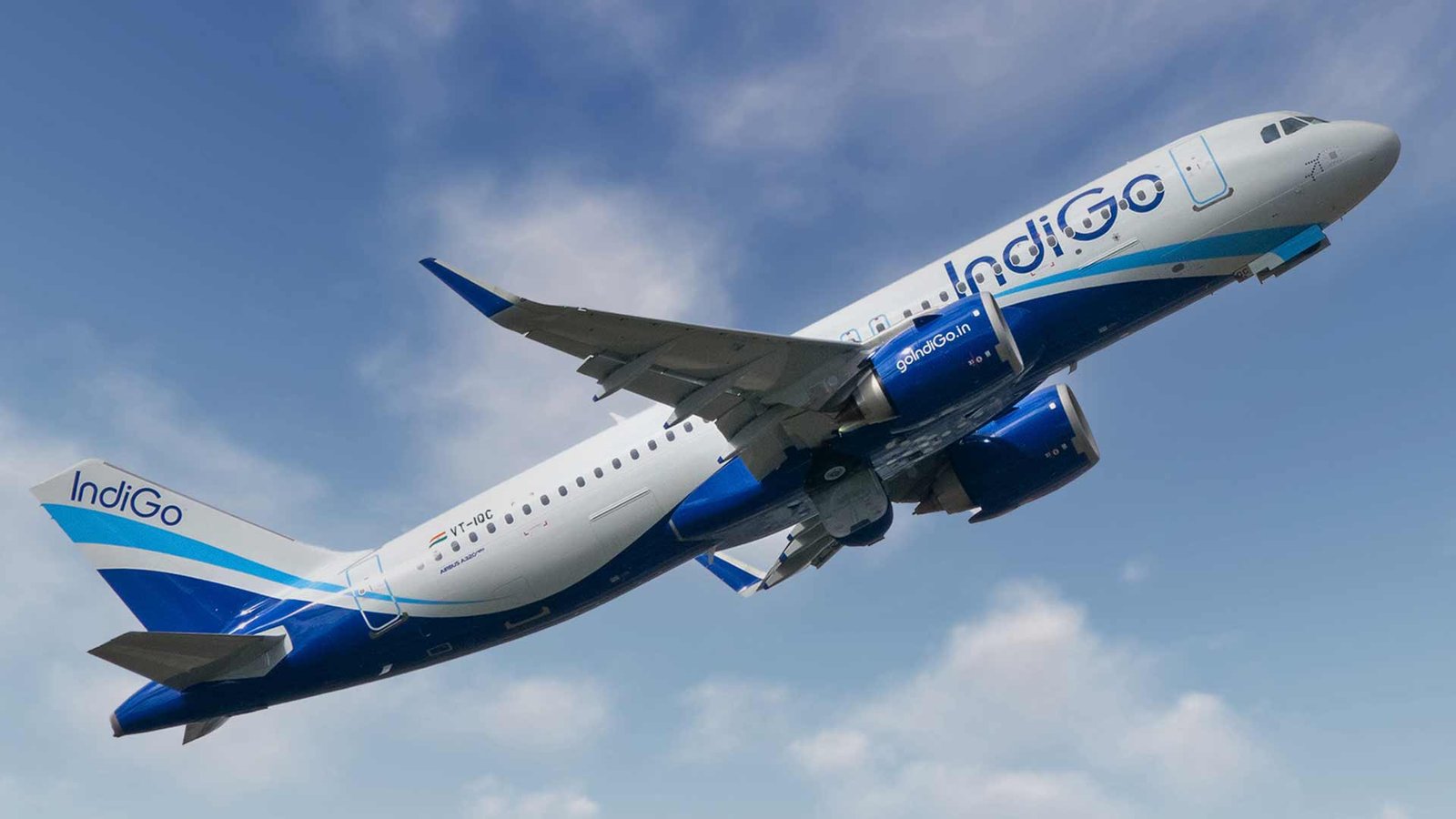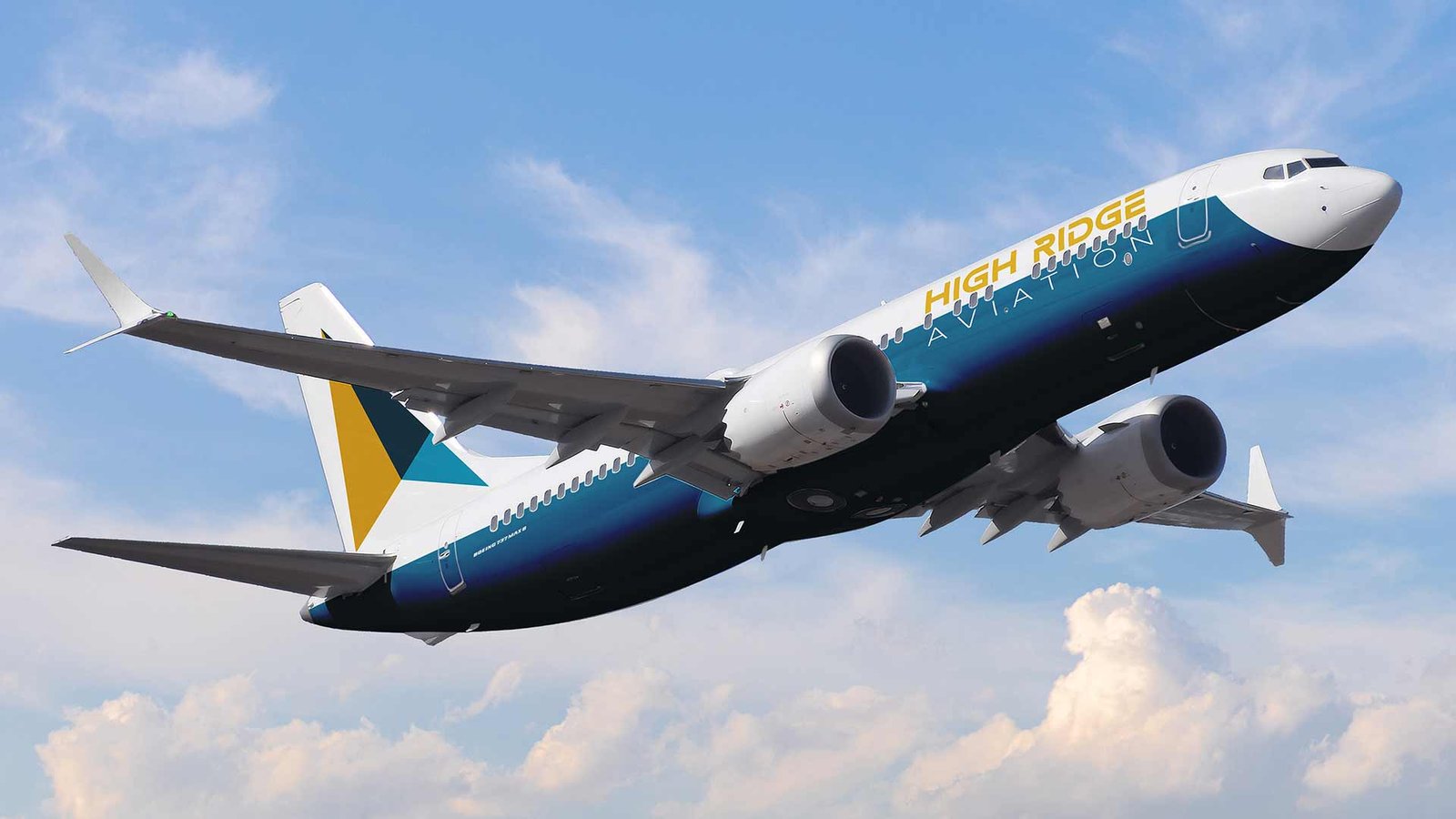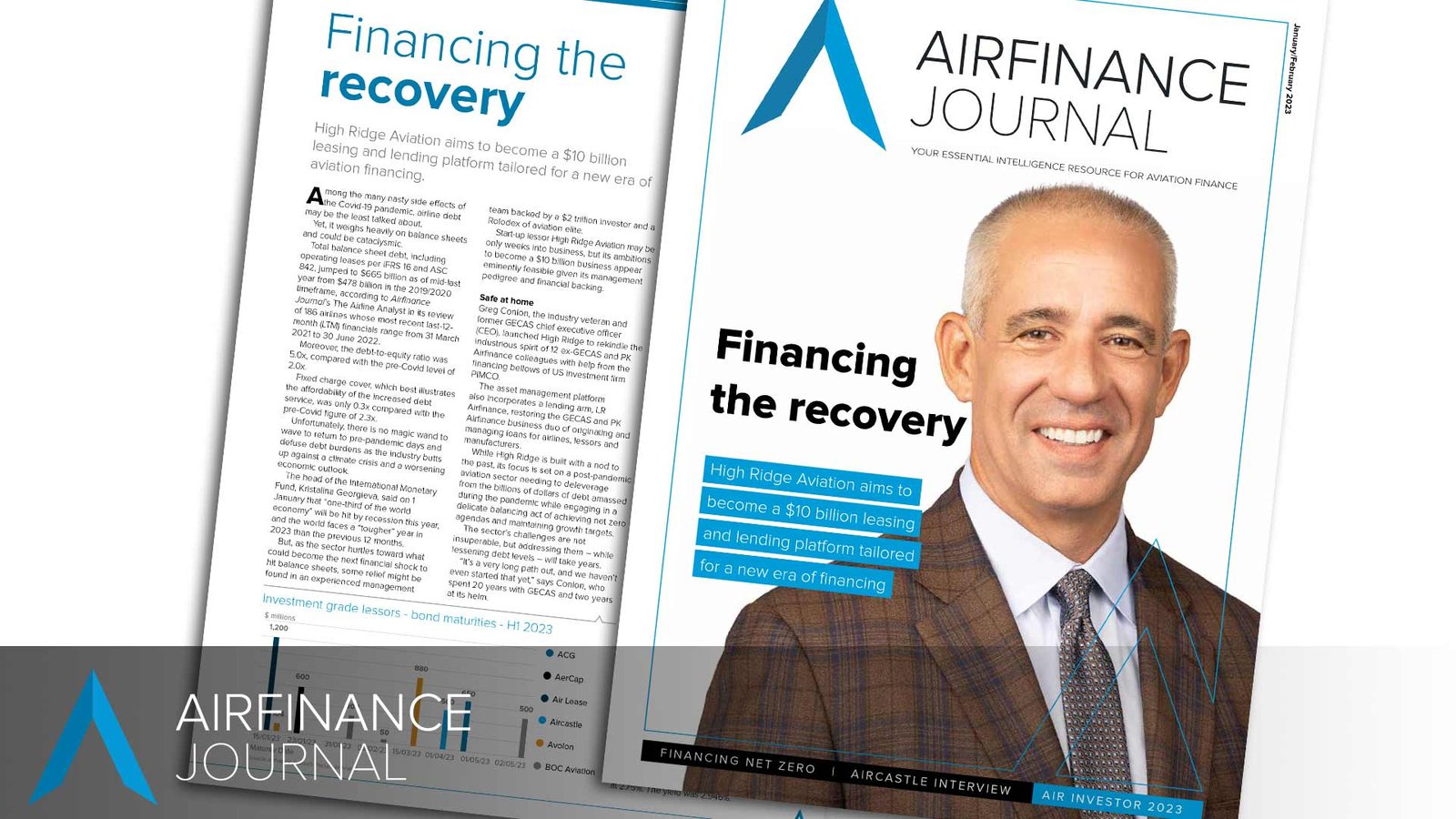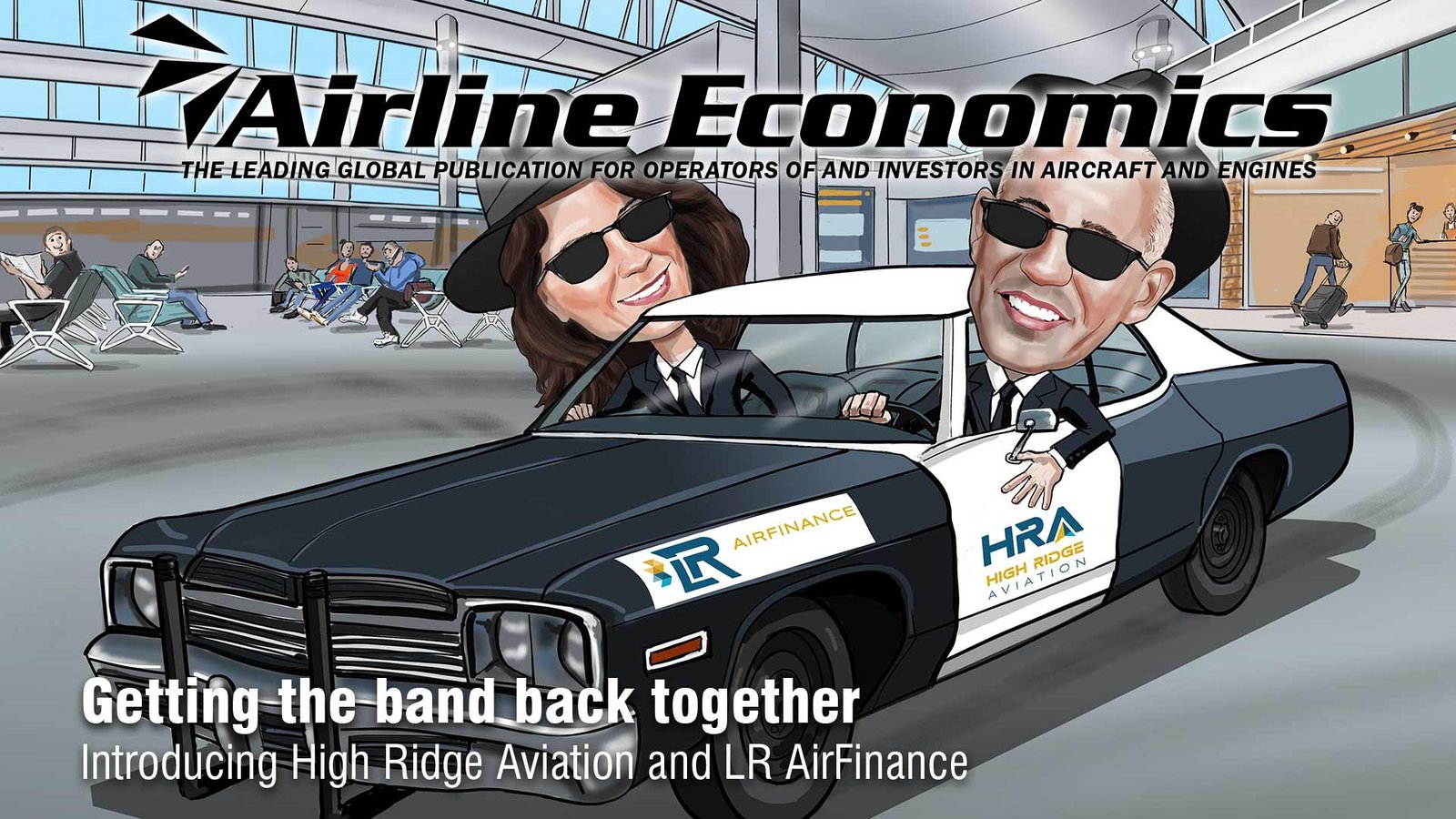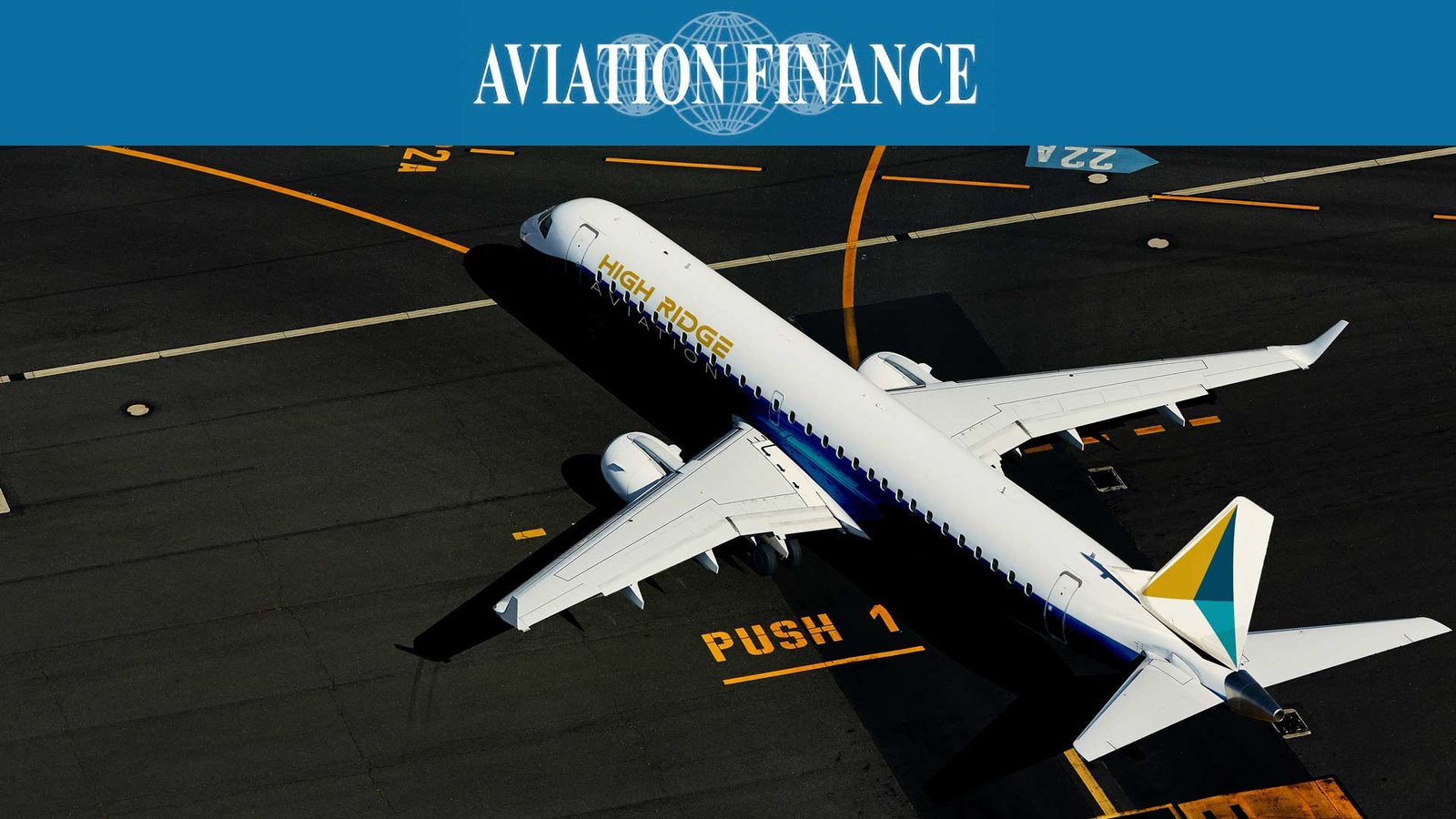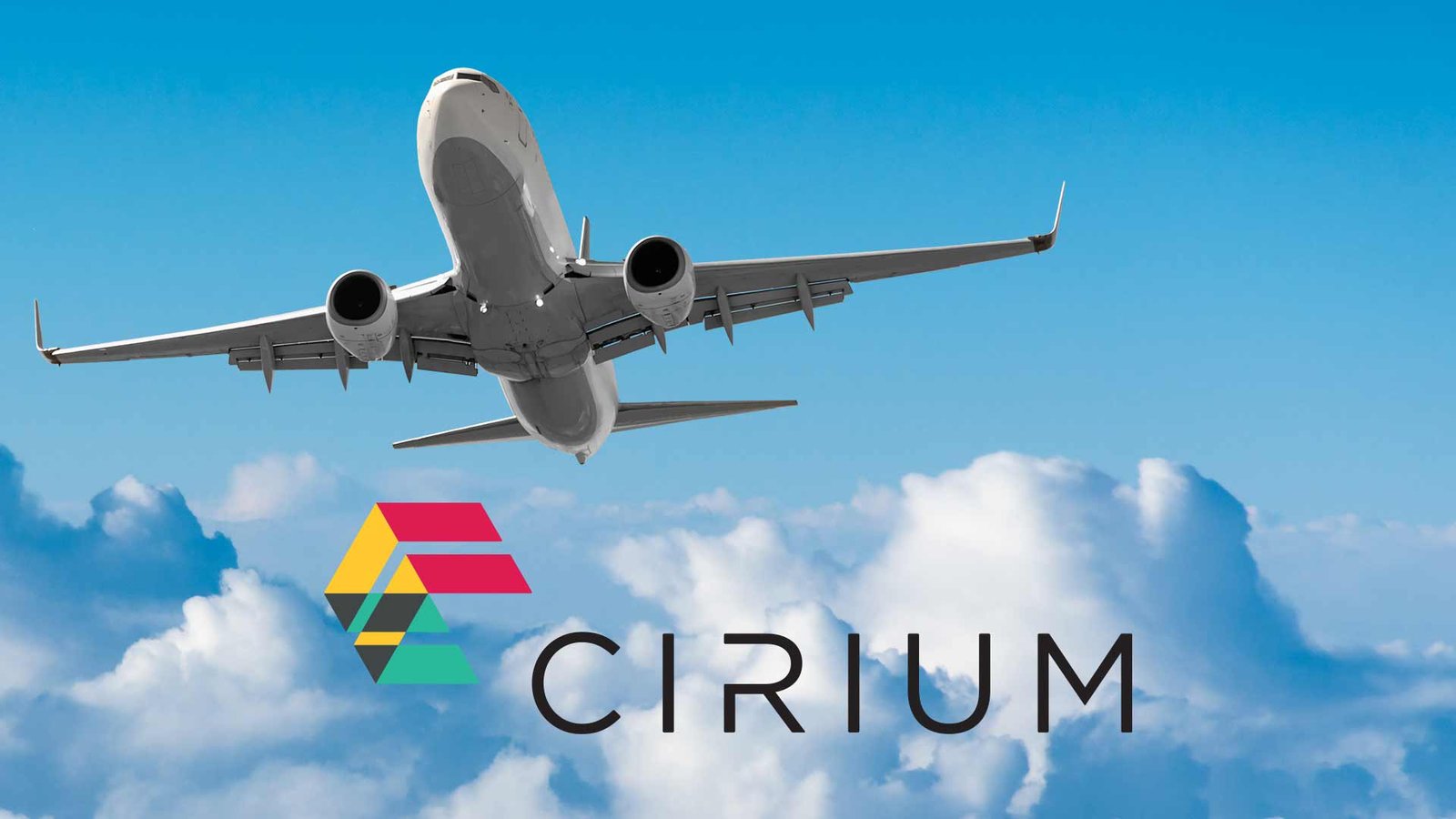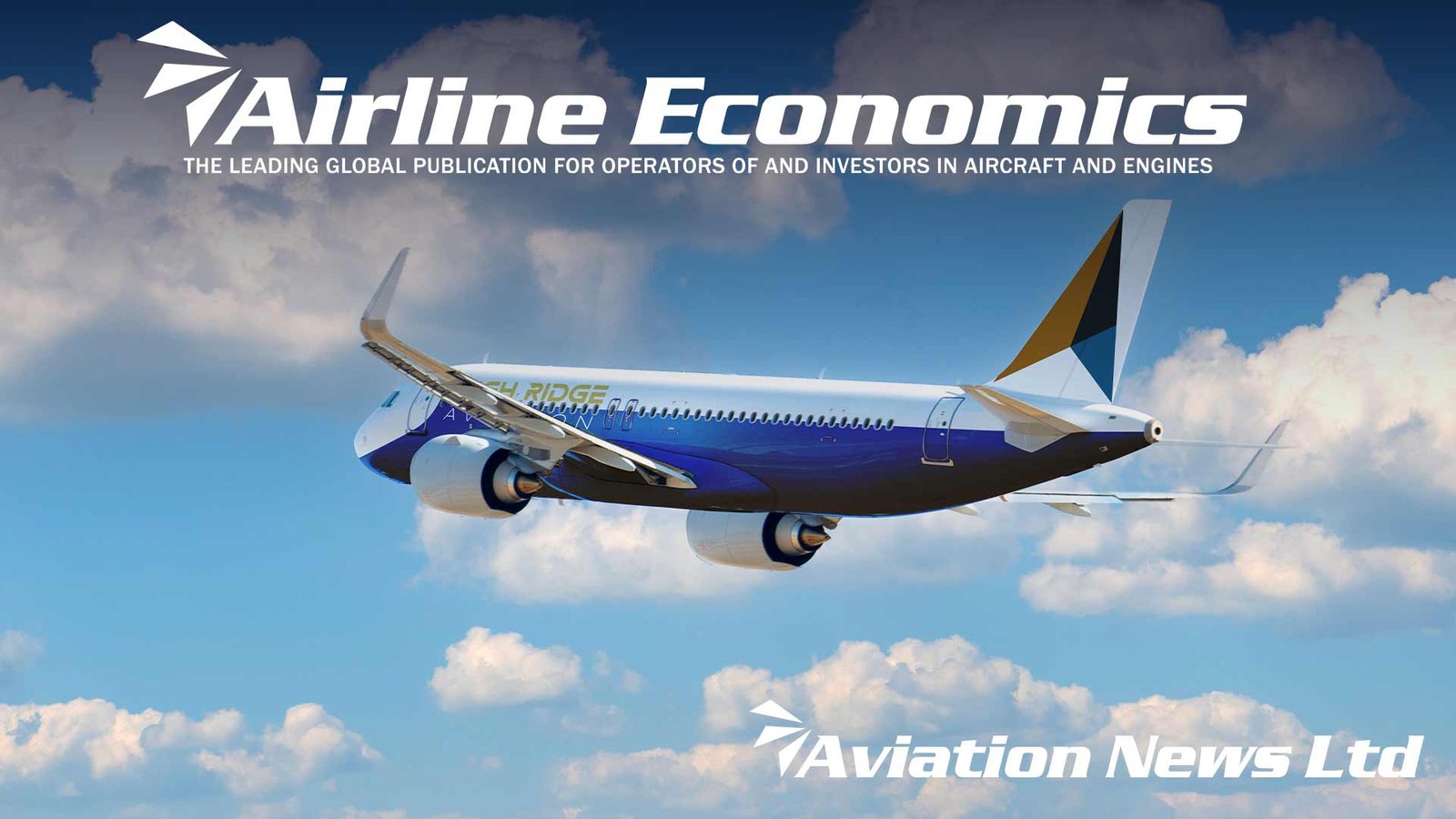Berkshire Aviation Leadership Report 2025
Aviation Global Leaders Interviews, presented by Airline Economics and KPMG

Joe O’Mara speaks with Greg Conlon, CEO of High Ridge Aviation, about the company’s asset management platform, which has quickly gained traction since its launch two years ago in partnership with PIMCO. Conlon shares his insights into the aviation market’s recovery post-COVID, highlighting regional variations such as Southeast Asia’s slower rebound due to debt and state aid issues. He also discusses the impact of cost pressures, supply chain challenges, and his optimistic outlook for aviation’s future, driven by global GDP growth and interest rate cuts.
VIDEO RECORDED IN NOVEMBER OF 2024.
Transcript
Joe O’Mara: Hello, and welcome. My name is Joe O’Mara. I’m the head of aviation finance with KPMG. And on behalf of KPMG and Airline Economics, I’m delighted to be joined by Greg Conlon. Greg is the CEO of High Ridge Aviation.
He’s joining us for the Berkshire Aviation Leadership Report 2025. And we’re recording this in Singapore in November as the votes for the US election have started to be ended. So, Greg, we won’t go to there because we’ll forever time stamp the video. But before we get into the meat of the conversation, do you want to tell our watchers a little bit about High Ridge?
Greg Conlon: Sure. Thanks, Joe. And I appreciate the opportunity to be here today. As always with you, it’s always a good discussion. And, KPMG has always been a big supporter of the industry. So, thanks again for all the support.
A little bit about High Ridge Aviation. We started High Ridge around 2 years ago, launched almost 2 years ago to the day. It is an asset management platform, but does both leases and debt. Very similar to a GECAS model where we did with both leases and equity or debt with the PK function, which we now call LR. We launched 2 years ago.
Our primary partner is PIMCO. They do most of the fundraising for us as well. We’re through our first fund now, probably about 60 to 65% deployed, looking to close out that first fund. And then as we move into the latter part of the year, we’ll probably move on to our next fund and continue to build this up. And we’re looking to build, High Ridge to be one of the premier asset management platforms in our space.
So, we’re excited about the opportunities. I think it’s an interesting time to enter the market. You and I have talked before about how lessors are now moving more towards this fund model space, and, you know, we can explore that a little bit more today as we as we chat through it. But I’m delighted to be here and, look forward to the conversation.
O’Mara: Super stuff, Greg. And maybe we’ll start with your perspectives on the demand environment. And what we’re seeing both in terms of, airline customer performance, and just how that’s splitting out by geography.
Conlon: Demand overall has been really strong, and we’ve seen it come back, almost with a vengeance post COVID very quickly and then I think pretty stable in the past year and a half. I think in most accounts, Joe, we’re back to or above pre COVID demand cycles around the world. I think the one area that’s just been a little bit softer on recovery has been Asia, particularly Southeast Asia and others.
And I think that’s a function of 2 things. 1, a lot of the airlines in that region, Joe, just weren’t able to avail the state aid that many other airlines did during COVID, and they also weren’t able to avail of more conventional restructuring methods. So they’re carrying a lot of debt and a lot of legacy from a really brutal period during COVID and working their way through that. And the second component of that is we’re just seeing a little bit slower growth of that external out of China tourism travel, and that’s impacting a lot of the regional carriers around that relied on a lot of that traffic. So, we think it’s going to come back. I think it’s a little slower than the rest of the regions.
But globally, in most pockets, we’re seeing demand come back quite strong. In some cases, you’re reading about, airlines that are backing out of slots or can’t operate in routes, and it’s a bit of a head scratch. You’re saying, “well, hang on a second. If demand’s so great, how come airlines are backing out and moving out of slots?” And I think that’s really a function of cost creep. So, we saw demand come back. Revenues and yields just rocketed up. They leveled out a little bit. And then now you saw some cost creep come through from both inflationary pressures and labor pressures.
Fuel has been pretty constructive, I think, overall, but we’re seeing a lot of labor costs drive up. And so, routes that were profitable at really, really high yields are now getting pretty skinny or maybe a little bit cash negative for some of the airlines. So, while the demand is there, I think some cost pressure in pockets, particularly in the US and Europe has caused some retrenchment in routes. But overall, it’s been a pretty resilient recovery.
O’Mara: Yeah. And that feeds into maybe picking on that airline performance piece as we look at into next year. Yeah. There’re always geopolitical challenges. There’re always macroeconomic issues to manage. Are we in a period of just, if I say, a normal level of challenge in those areas, or would you have any heightened risks when you look at your airline customers?
Conlon: Well, what I like about the airline customer space now is the vast majority of them have cleaned up balance sheets and are now in sort of, I’d say, that build cash, build revenue mode, and increase the health of the balance sheet, which is certainly helpful. We talked about the demand dynamic coming back.
I think some of the challenges in the space really are, availability of aircraft supply. Right? And that’s really driving limitations on growth. It’s driving up aircraft values. It’s driving up lease rates. And from an airline perspective, I think that puts a little bit limit on growth, but it’s certainly a tailwind for investors that come into this space and certainly a tailwind for lessors as owners of assets. It’s a good time to own these assets. It’s a good time to manage these assets as we climb out of this cycle.
I think overall, though, you know, we’re still pretty bullish on the space. There might be a couple more interest rate cuts coming in the future that might drive. I think most people are predicting 2 or 3 cuts by the end of the year, maybe 25 basis points. And I think that’ll drive some more, some more liquidity into the space as debt rates come down a little bit, and that’ll help asset trading. But again, overall, going back to the demand question, I still think, there’s growth for airlines.
Profitability will improve. Cash flow will improve. I think it’s steady. I think they’re going to rush back, but I think it’s, you know, we’re optimistic about the space overall.
O’Mara: And to bring you back to the supply point you mentioned, which is probably the key challenge the sector has at the moment. And we had the positive news and the Boeing strike yesterday, but that’s really a cog in a much more challenged wheel. Right?
Your perspectives as an asset manager that’s looking to build out your fund and access metal and hope you want your next fund and access more metal without an order book. How challenging is the supply environment to that, and how do you see the supply challenges uncorking?
Conlon: Yeah. This is so there’s a couple of, I’d say, headwinds on the supply side. One is Boeing, as you mentioned. We in our previous life, we’ve got a little bit of experience of what it’s like in a in a large corporate turnaround, and I think folks just need to step back and say, you know, this is a long process that Boeing’s going to go through. I think it’s going to be a multiyear turnaround. I have every confidence in the world they’ll do that.
I think in our space and the world overall, a healthy Boeing is good for our industry. When you have a duopoly, it’s important that both, both providers are producing, and you get people optionality. So, I’m confident that Boeing will get there. I do think it’s going to be a multiyear turnaround because you’ve got to you’ve got to address manufacturing. It’s a cultural change, and that takes time.
You’ve got to be relentless about your focus. You’ve got a singular focus on changing the culture and improving production, and they’ll do that. But that’s going to be probably multi years on the supply side overall. We talked the Pratt and Whitney issue is certainly affecting our industry. It feels like, that’s more of a “known” known, Prattis on schedule in terms of, what their previous indications were, how long this was going to take.
So, it feels like we’re almost 40, maybe 50 percent through that, but that’s certainly going to be supply side legacy issues as well. And then Airbus is, you know, having some production teething issues as we all do with new products. So, I think for the next end of the decade, you’re going to see the supply strain, can continue in our space and drive up asset values and residuals and lease rates.
And then pivoting back to as an asset manager, what does that mean to how, you grow your business and do others? On the positive side, we’re seeing the share of leasing continue to grow, and that’s been a consistent theme in our space for the past 20, 25 years.
Depending how you measure it, lessors are around 55% of the world’s fleet, and that’s continuing to grow. Secondarily, we’re also seeing, airlines use more of lessors’ balance sheet to more efficiently fund their operations, which is from an asset perspective, I think, I think makes a lot of sense. And then we’re also seeing a lot of sales activity in our space. So typically, lessors sell between 10-15% of their fleet a year on average, give or take a few. And then during COVID, you had really 2 or 3 years where none of that happened.
So, we have a lot of pent-up assets that haven’t been sold. We have capital markets that really were locked up for a while, and now they’re coming back online providing liquidity for the buyers and also lessors. So, we’re seeing a lot of portfolios come to market, and that is driving some supply, I’d say, help on the supply side. But still, there’s just lack of new deliveries out there. It does drive up asset values as well.
But we’re still seeing some opportunities out there, and that’s why we’ve been able to be pretty patient about how we grow and add assets to the books.
O’Mara: Yes. A couple of elements to that. We’re going to say, well, our customer base is just naturally increasing as airlines grow, and the leasing percentage grows. And you’re starting to see some divestment from the larger players maybe getting back to a more regular trading market, do you think? I think when we were chatting, you know, maybe a year ago, we would have said, trading market’s a bit stodgy. Right? It’s just that there aren’t that many trades happening. Seems as if sentiment and activity is definitely on the increase there. Is that what you guys are seeing?
Conlon: I do believe that, and I also think, aviation once again has proved itself as an extremely compelling investment thesis because through all kinds of disruption, COVID, global disruption, and others, you’re seeing aviation stay very resilient, and I think that’s why, you’re seeing more investment in this space. It has a relatively low beta compared to stock markets or other indices. It’s just a really sticky space. It kind of behaves like, kind of behaves like infrastructure financing, but I call it little “i” infrastructure, not quite big I infrastructure. It provides a little more yield for that.
So, and it’s proven itself as a good inflation hedge. So, there’s a lot of reasons to like this space coming in, and I think you’re right. I think, there is the capital markets coming back online have been very constructive. We’ve seen probably 4 or 5 prints on ABS issuances just part of this year. There’s maybe 4 or 5 more in the queue, and you can just see that in the rates.
We see the A note tranches started to trade. Some of the first prints that came out maybe 3, 4 months ago were low twos, 210, 215 over for a big A tranche. Then, we saw prints coming in at 195. Now they’re 190. Now indicatives are getting tight to that.
So, you’re getting back to sort of pre COVID very attractive interest rates to finance these assets. And not only the capital markets coming back on, but also other lending sources. So, we’re seeing CLO markets come back. That’s providing interest in the debt markets. So, I think overall, it’s being more constructive, and then the asset class itself has proved itself, to be relatively strong through disruption cycles.
O’Mara: Yeah. And maybe I’m going to pull up a couple of threads on that, but I might start with the attractiveness of the asset class then and you have those kind of 2 pillars if you look at it where you kind of say, well, on the one hand, an outsized impact from COVID and Russia on the space, but the counter to that, the very strong counter to that, is just, as you say, the resilience and how the asset class and the lessors or asset managers engaged in it did such a good job in keeping airlines alive and continuing to generate cash and generate returns.
As you look back, you know, it’s been around this space for a long time, would you view aircraft as an asset class as more, less, or equally as attractive as where it was in 2019 as an example?
Conlon: I actually view it more attractive now for really two reasons. One, there’s less supply. So, 2019, I remember in the discussions you and I had and just chat around conferences. Wow, we’ve been on an upcycle for a really long time. You know, this has been depending on how you measured it, it was 10, 12, 13 years of an upcycle. This isn’t an industry that’s typically a 10-year cycle from peak to trough.
Right? Peak to peak. So usually a 5 years up, 5 years down, give or take a few. And the big nervousness was, “Wow, the big corrections coming.” Right?
And then sure enough, the correction comes, but it’s not how you usually think about it. It comes from COVID primarily, and you had a grounding of the MAX, and that took out some supply as well, which I think actually was helpful in terms of the asset values. And when you take a step back and look at everything you’ve been through and now find out that asset values are up 15%, give or take a few. Asset values are up, rents are up or about the same. Residual values have proved a really effective hedge against inflation as they improve.
So, from an investor that comes into this space and understands it, I think they’ve been okay. I’ve got a pretty good recent history here of what a shock looks like to this asset class. We have a pretty good track record of how asset managers and good asset managers manage through a down cycle and what that looks like. And then you back that into a class that closely tracks global GDP. And if you have a lack of supply, you have global GDP that’s growing, and you have an asset class that’s pretty resilient.
That drives a lot of capital into this space, and I think that’s why those fundamentals are continuing to be positive for at least investors that we talk to, that really like an allocation into aviation.
O’Mara: Yeah. And then maybe bringing you back then, particularly to the ABS space, obviously, a very sentiment driven market. And we kind of say pre COVID, we’re up to about $10 billion of assets. And, again, in your former life, you would have been very active in that ABS type space and tradable eNotes and ABCs and a very good space.
Closes with COVID. Reopens very strongly, predominately as a debt product. Closes rush interest rates, now reopens now. And we’re kind of seeing A’s and into some B’s, and you mentioned some very positive rate movements. You know, it sounds, I’d be of similar mind, that you’re kind of optimistic that space will kind of continue to grow. Is it one that you could see High Ridge having a look at into the future? Or what’s your perspectives there?
Conlon: Yep. Absolutely. We certainly look at the ABS all the time. But I think it’s important that, you know, ABS is an option, but it’s not a funding plan. Right? You don’t underwrite. I think it you know, experienced asset managers don’t underwrite assuming ABS is going to be their takeout. So, the way we underwrite assets is, you know, we match fund deals, we don’t take interest rate risk. We have very constructive financing associated with this.
And I do think the ABS markets are compelling takeouts, and sometimes you can pick up, you know, a 150, 200 basis points of yield if the markets are constructive. But we underwrite our assets assuming we hold them with more stable financing associated with it. I do see the ABS market coming back and be more constructive.
You mentioned the, obviously, the debt classes come back first. And when did the e notes and the equity comes back in again? I think the A notes and the B notes and sort of since C notes have proved themselves very resilient through COVID, and I think investors have done well on that. On the equity side, of issuing equity notes of which, you know, we generally don’t do, but others do to try to sell assets, I think that’s probably the last to come back in. I think they need to see okay.
Let’s see some trades. Let’s see some valuations. Let’s, I think some of the issues with previous ABS is where you just really didn’t have an active mass asset manager there. And so, they were a little bit like portfolios with, light management. And I think that the ABSs that had better management did far better.
So, I think you’re going to see more of a premium for, okay, who’s my asset manager? And that’s going to drive some of the some of the equity discussions coming back.
O’Mara: Yes. You see those serial issuers that have a track record in relation to it or you say a very active and engaged management group. Maybe to bring you back on broader on the debt market.
And you’re both a taker and a provider, right, in this space. And maybe starting on the take side, the debt products that have been attractive to High Ridge so far, can you talk to us about them and maybe your overall thoughts on the health of the aviation debt market?
Conlon: Sure. So, on the taker side, meaning, you know, we’re borrowing Yeah. And using that for financing.
You know, part of our partnership with PIMCO is has been very constructive on the bank side as you can imagine in our in our previous life. We had a tremendous relationship with banks. We did a lot of work out there with banks, and PIMCO, of course, is one of the largest, customers of banks worldwide. So, you kind of match those two relationships together, and we’ve been able to get very attractive financing. We have a very large warehouse with big marquee banks.
It behaves more like a term loan, gives us flexibility on takeout. And, you know, one thing I learned in my previous life here is, taking interest rate is a sure way to get in trouble. No matter what you predict, it’s going to be wrong, and so we just don’t do it, Joe. We just take, you know, we underwrite our deals. We match fund those deals, and then we use takeout financing on an efficient basis, but not as an underwriting case.
So PIMCO has been tremendously helpful for us in terms of getting financing and long-term stable financing. And then we can either from an optionality on just finishing the take part of that. We can either take out our portfolios with term loans. We could use the ABS’s. We can do some other hybrid structures, and we see those markets becoming more and more constructive as we go on.
You know, maybe pivoting a little bit to, the issuing piece of that. As you know, we have a debt business as well, our LR AirFinance, and, which is categorized, I would suppose, as an alt lender. Right? You know, similar to PK and some of the others out there that we know well. That space has continued to be quite interesting to us because while the capital markets have come back, in particular in ABS, a lot of the commercial banks continue to retrench out of our space.
And I’d say that’s less because of risk off for the asset class. I think it’s just the opposite. They like the space, just capital allocation requirements, various Basel rules, and what have you just make the returns, too anemic for that space. So that need has been filled to a large extent by alt lenders. And we’re a little bit different as an old lender where we can play in both parts of the cap stack.
We can issue just a regular alt loans, but we can also do IG loans only because, we have distribution channels for PIMCO with insurance SMAs. And so that allows us to originate kind of both parts of the debt structure, if you will. And that market is growing between either airlines or other lessors or other investors. And it’s quite helpful, on that debt model to be attached to an asset manager because you’re able to underwrite a metal a lot better. You know, you have a full-fledged technical team.
You have a full-fledged marketing team. So, our borrowers like that because we understand the metal very well. We can be constructive on how we how we structure the loans. We know what their needs are. And then, you know, if anything goes bad in this space, and it will and it always does, you’re attached to an asset manager that is fully capable of moving those assets if we need to somewhere else.
So, it’s a very, synergistic relationship that we have with that. And so, on the issue side as well, we think it’s a really interesting market. Then last on that market, we’re starting to see CLO market open up and which is quite interesting. Typically, for alt lenders, it was an issue and hold strategy. And now the with the CLO markets coming in, now it’s an issue build.
And then if the market is compelling, you can tap the CLO market and then tap more efficient pocket of capital that like that rating piece. And then you also help people hold the residual debt to kind of increase their yield.
O’Mara: Yeah. Because a couple of bits it’s really interesting stuff, right. Couple of bits I’m curious around on that. On in terms of the customer base that, you guys are accessing, you mentioned, like, the lessors, might be airlines. Can you talk to me a little bit of how that’s currently splitting out? And maybe as well, you mentioned playing in different elements of the capital stack. Is it secured and unsecured? Do you have a preference?
Conlon: So, as you’re assessing those opportunities, what are they like? So, on the issuing side, a lot of the customers on the mix of particularly the LR business and debt, I think it’s a combination as we talked about earlier. It’s other lessors, investors, and airlines. And they’re typically they move in different directions. Right?
When, the airlines are looking for a lot of debt, that’s usually when lessors aren’t and vice versa. Right? When the, the lessors are looking for capital, it’s usually the airlines are getting capital for more traditional sources or more efficient sources. So, currently, I’d say it’s about, you know, 60, 65 percent lessors and others is on, on airlines and debt stack. And that moves around a little bit, but I think that feels right about the market that we’re in.
And then, I’m sorry. The second part of your question on …
O’Mara: A unsecured-secured.
Conlon: Oh, sure. Unsecured-secured. So how do we think about funding the business whether it’s secured or unsecured?
I think the secured markets are quite constructive right now. The unsecured market, you know, that’s really you know, when we talk about unsecured, I think most people think, hey. Road to IG land. And the way I think about IG is, you know, IG is not a funding strategy per se. IG is a balance sheet strategy.
So, to get investment grade in our space, you need 3 things. You need, lots of assets. You need lots of really young assets. And then to a lesser extent, just don’t do dumb things on credit. So, you do those three things and you do it over and over and over again and get enough scale, then you can start legging into an IG stack.
But to build an IG stack from day 1, it’s a little bit like death by a 1,000 paper cuts because you’ve got to you got to originate quickly. You got to build quick because you got to keep that average age of your fleet young. So, to do that, you’re usually doing the better credit, skinnier returns, and then you’re borrowing unsecured but non-IG unsecured.
O’Mara: Yeah. You got to go high yield, and you got to pay for it really.
Conlon: You got to pay for it. So, you know, maybe you’re covering your costs, maybe you’re not. And so, it’s a race. You know? Can you can you get IG before you bleed out is kind of the way I think about it.
And so, you used to be, you know, you need about maybe $4 billion-ish of assets to get IG, and that’s now moved to the right. And now it’s more like 8. And so that’s, that’s tough to start from 0 and to get there in X amount of years. Non-IG, get there, start to leg into IG, and then finally harvest that gain. And then last is, you know, you’re just not getting that a ton of arb between secured and unsecured in terms of it’s probably less than 200 basis points.
So, there’s definitely economics, but there’s just not a ton of arb through there. And then on a fund model, you know, you’re just not doing $8,000,000,000 funds. It’s just not efficient. Right? And one, you don’t have diversification of, you know, investor diversification.
You do you got heavy concentrations, and it’s just not efficient to have that kind of a fund. So, really, that’s more of a balance sheet model. High Ridge is a fund model. You’re really not going to see any fund models go IG for those reasons.
So, it’s mostly, you know, secured market, tacked, tapped out with either capital markets, ABSs, or term loans.
O’Mara: Yeah. And the that element on fund size then as you think as you’re building the funds, do you have a goal ticket size? Do you have a broad range on it? How do you approach the one as you’re putting that fund together?
Conlon: Yeah. Sure. So, your fund has got to be you know, if you start off with a fund that’s too small, you know, $500 million of assets under management. In our space, that could be 10 planes. So, you winna have a fund that’s big enough to give the investors diversification, both asset wise, credit wise, and jurisdiction wise, and then also give you maximum flexibility on funding and efficient funding and takeout and things like that.
So, a fund that’s too big, barring M&A or chunkiness, then you’ve just got too long of a of a capital deployed period. So, when investors come into a fund, they there’s a build period, then there’s a cash distribution period, and then there’s sort of a harvest period, and then they get their return back.
And so, you know, investors have to have some visibility of what that’s going to happen. You can do evergreen funds, not all of it, but most of the time, you need to be able to get investors back their cash over a recent period of time by their 2, 4, 5, 7, 8 years, however it is. So that dictates to a certain extent your fund size where we think the efficient fund is probably that $2 to 3 billion,000 size.
That gives you the ability to diversify and give you multiple takeout options, and also gives you scale where, you know, you can do 5, 6, 7 airplanes with a single obligor, which airlines find helpful when they’re doing large transactions. But your also funds big enough that it’s not over diversify or over concentrated in one asset or whatever. So, we kind of like that two-plus billion-dollar size fund, and I think that’s probably been, probably the most constructive in our space.
O’Mara: Yeah. And stepping back and appreciate it’s the space that maybe you were formally in and looking at the balance sheet lessors.
Do you think we’re in a world where we’ll just see maybe fewer but much larger balance sheet lessors? And then guys like yourselves playing the asset manager, space where you’re relying on the right shareholder behind you, the right team, and building that fund size piece. But we might see whether it’s a cohort of 5, 10, or 12 start to pull away a little. What’s your perspective on that?
Conlon: I do think our space is moving more towards the fund model, for several reasons.
I think it’s the most efficient allocation of management resources. So, you can have a management team that is, you know, we’re geared to run a $50 billion portfolio, but you can diversify that balance sheet risk over funds. So, we have investors that come into a fund, and they can put a $50-100 million ticket in. But in relation to their total AUM of other investments, it’s less than one tenth of 1% in a lot of cases. So, you can get access to this space.
You have a management team that knows what they’re doing. It can and really, really be good stewards of capital and mine returns, and their risk is far more diversified. When you have a balance sheet model, there’s a couple of challenges with them. We speak from experience from that, by the way. You know, a balance sheet model is good until it’s not.
And you need some pretty special owners that can be efficient at owning 10, 20, 30, 40, $50 billion of aviation on a single balance sheet. You might have to make your capital stack be efficient for those type of returns. It has to be big enough where it’s diversified, and that’s kind of a single-owner balance sheet model. A public model, is an efficient model in some cases, but it has disadvantages in others. Some of those are you’re not going to get full rating agencies from all rating agencies.
Some just don’t give single obligor or single industry aircraft aviation leasing. They just won’t rate it IG no matter what you do. And the second piece is you’re you have a got a problem to trading at a premium to book and showing investors the growth because they want growth. And, assets are depreciating assets. So, the only way to grow in a public model is you got to get that ass you got to get on that asset train.
And when you’re 2, 3, 4 billion, you can do that. When you get bigger and bigger, it’s just harder to demonstrate growth. So, while it’s a great business in aviation, I’m not sure the public model or the balance sheet model is the most efficient way to fund it. And so, I think, the space is going to continue to go to asset managers where you’ve got, pockets of capital that are efficient in this space and then you have asset managers that solely focus on sourcing and managing the assets.
O’Mara: Yeah. No. A lot of that I’d follow and very logical. Loads of interesting stuff in that, Greg, is just in closing as we sit here, as I say, in early November. Looking out into 2025, what are your optimism levels like?
Conlon: I feel good about 25. I think, I mean, coming through the past few years that we’ve had, it’s easy to feel positive. There are there’s always headwinds in our space, Joe. We’ve got, you know, there’s some global conflicts going on between, whether it’s Russia, whether it’s the Middle East, whether it’s, China relations cooling with the West, whether it’s onboarding of more manufacturing versus supply chain shrinkage. But overall, you know, I come back to this asset is a tremendously resilient asset class, and we’ve seen that over the past couple of years and growing. I think the interest rate cuts by the Fed and the European Union have been constructive.
And I think, they’ve done a good job navigating what, you know, ‘touch wood’ here, is looking to be more of a soft landing than a recessionary impact. I think that’s constructive to our space. I think the global supply shortage of aircraft will continue to drive up asset values and be a good return for investors. And then if you ever is a, and let’s hope there never is. But if there is another global pandemic or things like that, I think the response from the world is going to be markedly different.
And I certainly hope and believe that a type of shock and shutdown that we saw before isn’t going to happen again. I think we’ve learned a lot from that, and we know how to navigate that a little bit better, and that should be more of a softer landing for our space. And so, I think the world wants to fly again. We’ve seen that over and over. Last, you know, in our industry, we’re on airplanes all the time.
It’s full everywhere you go. You look right, it’s full. You look left, it’s full when you get on the airplane. And, as much as we, you know, like to complain about that flying, I think for an industry, it’s tremendously healthy. So, I’m optimistic about the, the outlook for our space going forward, and, you know, I look forward to, many more years of this.
O’Mara: Alright. Well, Greg, thank you as always on behalf of KPMG and Airline Economics for your insights, and we wish you and High Ridge Aviation a very successful 2025.
Conlon: Thanks very much, Joe. Appreciate it.
O’Mara: Thanks. Cheers.
Conlon: Thank you.


